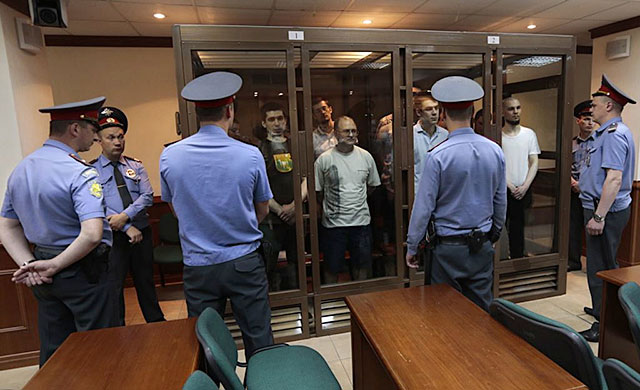The Institute of Modern Russia is launching a new project, “Political Prisoners”: a series of publications on those who have been jailed in Russia merely for their actions in opposition to the current regime. The full list of Russian political prisoners is published on the IMR website.

The trial in the “Bolotnaya Square case.” Moscow, 2013.
“You should not see me as a symbol that there are no political prisoners left in Russia,” Mikhail Khodorkovsky, Russia’s best-known political prisoner, said on December 22, 2013, two days after his release. “I am asking you to see me as a symbol that the efforts of civil society may lead to the release even of those people whose release was not expected by anyone. We must continue to do all we can to make sure that there are no more political prisoners in Russia or, for that matter, in any other country. I will do everything in my power to work towards this goal.”
The full list of Russia’s current political prisoners has been published on the IMR website. These are the people recognized as political prisoners by Russia’s Memorial Human Rights Center on the basis of detailed criteria developed by an international group of human rights defenders. In an interview for the IMR website, Alexander Cherkasov, the chairman of Memorial, explained who should be considered a political prisoner and why.
The recognition of a person as a political prisoner signifies neither agreement on the part of Memorial Human Rights Center or the Institute of Modern Russia with the views and statements of this person, nor the approval of his or her statements or actions.
As part of its “Political Prisoners” project, the IMR will shortly begin the publication of “portraits” of modern Russia’s political prisoners.